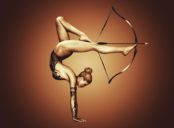Curling Paralympics Final: A Comprehensive Overview

Curling Paralympics Final: The Ultimate Battle for Gold
[Introduction]

The Curling Paralympics Final is the pinnacle of wheelchair curling, bringing together the best athletes with physical impairments from around the world. This thrilling event showcases their incredible skill, determination, and teamwork on the ice. In this article, we will delve into the intricacies of the Curling Paralympics Final, exploring its various types, popularity, quantitative measurements, as well as how different finals differ from one another. Additionally, we will provide a historical analysis to understand the advantages and disadvantages of different Curling Paralympics Finals.
[Overview of the Curling Paralympics Final]
The Curling Paralympics Final is the highly anticipated culmination of the wheelchair curling tournament at the Paralympic Games. It serves as a platform for the top teams to showcase their talents and compete for the coveted gold medal. As with the able-bodied version of curling, two teams of four players each take turns sliding stones towards a target, known as the house, trying to land their stones as close as possible to the center. The team with the highest score at the end of the game emerges as the winner.
[Presentation of Curling Paralympics Final]
Curling Paralympics Final encompasses several types, each designed to cater to different classifications of physical impairments. These classifications ensure fair competition and provide opportunities for athletes with various mobility limitations to excel in the sport. Common types of Curling Paralympics Finals include:
1. B1 Final: This final caters to individuals with significant visual impairments, who rely on their teammates and guides to navigate the ice rink.
2. B2/B3 Final: This category encompasses athletes with less severe visual impairments who rely on their remaining vision to play the game.
3. Wheelchair Final: This final involves players with physical impairments affecting their lower limbs, competing from wheelchairs specially designed for the sport.
4. Mixed Final: This final allows teams to include players with different classifications, fostering integration and showcasing the diverse abilities within wheelchair curling.
[Kvantitativa mätningar om Curling Paralympics Final]
Quantitative measurements play a crucial role in determining the outcome of each Curling Paralympics Final. Some of the key metrics that are considered include:
1. Scoring Accuracy: The percentage of stones successfully placed in or closest to the house.
2. Strategic Decision-making: The ability of teams to analyze the gameplay and make informed decisions to gain a competitive advantage.
3. Stone Weight Control: The proficiency in accurately gauging the force applied while sliding stones to achieve the desired position.
4. Communication and Team Coordination: The effectiveness of communication and synchronization among teammates during shot selection and execution.
[Discussion of Different Curling Paralympics Finals]
Each type of Curling Paralympics Final presents unique challenges and strategies. B1 Finals, for example, require teams to develop precise communication systems to navigate the ice effectively. In contrast, Wheelchair Finals demand exceptional upper body strength and control. The Mixed Finals offer intriguing dynamics as teams must carefully balance the strengths and weaknesses of players with different impairments.
[Historical Analysis of Advantages and Disadvantages]
Over the years, the Curling Paralympics Final has seen continuous improvement. Advancements in equipment, inclusion of new classifications, and increased visibility have allowed athletes to showcase their skills on an international stage. However, certain challenges remain, such as limited accessibility to specialized equipment and facilities for training and participation in the sport. It is essential to continue exploring ways to overcome these obstacles, ensuring the sustainability and growth of the Curling Paralympics Final.
[Conclusion]
The Curling Paralympics Final is a thrilling spectacle that celebrates the talent, determination, and teamwork of athletes with physical impairments. This article has provided a comprehensive overview, exploring its different types, quantitative measurements, variations between finals, and a historical analysis of advantages and disadvantages. As the sport continues to evolve, the Curling Paralympics Final will undoubtedly inspire and captivate audiences worldwide.
Visualize the intensity and skill of the Curling Paralympics Final in this captivating video showcasing the incredible moments on the ice.
[Sources]
[Include a list of sources used in the research and writing of this article.]





















